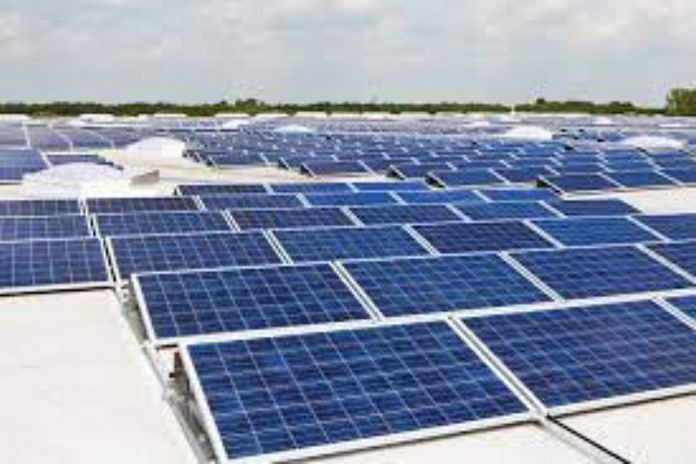New Delhi: India’s solar PV (photovoltaic), or solar panel, sector is likely to reach self-sufficiency within the next three years, a new report has found, indicating it could become a viable alternative to Chinese modules that dominate the global market.
The report, published jointly Tuesday by Institute for Energy Economics and Financial Analysis (IEEFA), a US-based think tank, and JMK Research, a Gurgaon-based research and analysis firm, says India’s “nameplate” solar PV module manufacturing will reach a capacity of 110 gigawatts (GW) in 2026, at which point it will “attain self-sufficiency for its solar PV module demand”. “Nameplate” is the maximum production capacity of a facility.
The finding comes at a time when India is scaling up domestic manufacturing to achieve its goal of installing an electric power capacity of 50 per cent from non fossil sources by 2030. Solar power is projected to shoulder a bulk of this growth.
The Ministry of New and Renewable Energy announced last week it had allocated a capacity of 48,337 megawatts (MW) of domestic solar PV modules across two tranches of its PLI scheme, with a cumulative support of more than Rs 18,500 crore.
Also read: Sustainable transition to green energy is a challenge the world faces. Chile has a playbook
India & solar PV
India’s solar cell and PV module capacity has more than doubled since 2020, the research shows. In 2020, India’s solar cell nameplate capacity stood at 3 GW, which grew to 6.6 GW by March 2023. Its solar PV module capacity, meanwhile, has grown from 15 GW to 38 GW over the same period of time.
This, the findings say, is in response to the “favourable policy environment created by the Indian government.” Apart from the PLI scheme, tariffs on solar PV imports and creating a list of approved models and manufacturers has helped motivate domestic manufacturing.
By 2026, the report projects India’s capacity for polysilicon, ingot/wafer production — all essential components of solar PV module manufacturing that are “virtually non existent today” — will reach 38 and 56 MW respectively. Solar cell manufacturing capacity is expected to rise to 59 MW, while module capacity to 110 GW.
According to the report, the price of polysilicon surged after the Covid-19 pandemic from $6.8 per kg to $40 per kg in 2022, and is expected to come down to pre-pandemic levels this year, which will aid domestic manufacturing capacity.
“Even with aggressive market drivers and government support, many minor hiccups still impede the development of the domestic PV manufacturing sector. The biggest challenge is sustained reliance on China for its raw material,” says the report, adding that domestic supply can be strengthened through various policy interventions.
To further bolster domestic manufacturing, the government should consider extending the existing PLI scheme to other “overlooked” ancillary components, such as glass and ethylene vinyl acetate (EVA, used in panel lamination).
It should also consider incentivising electricity consumption among solar PV manufacturers, as well as offer a subsidy for initial capital costs involved with setting up production facilities, it says.
(Edited by Smriti Sinha)
Also read: Gujarat is scripting biggest solar power revolution in India. Other states can catch up



